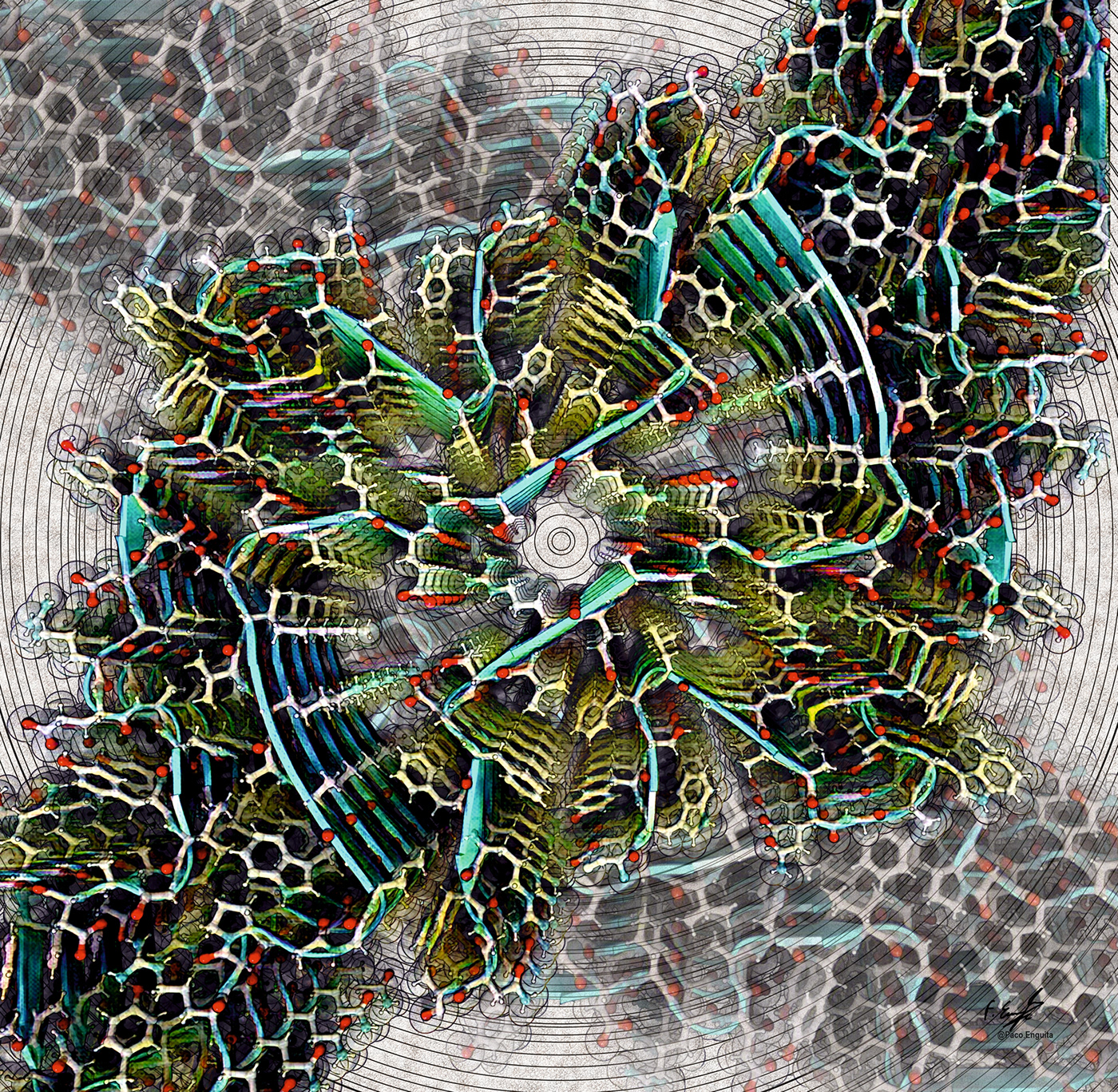


AA amyloidosis is a systemic disease characterized by deposition of misfolded serum amyloid A protein (SAA) into cross-β amyloid in multiple organs in humans and animals. AA amyloidosis occurs at high SAA serum levels during chronic inflammation. Prion-like transmission was reported as possible cause of extreme AA amyloidosis prevalence in captive animals, e.g. 70% in cheetah and 57–73% in domestic short hair (DSH) cats kept in zoos and shelters, respectively. Here you can see the 3.3 Å cryo-EM structure of AA amyloid extracted post-mortem from the kidney of a DSH cat with renal failure, deceased in a shelter with extreme disease prevalence and reported by Schulte et al (Nat Comms, 13: 7041, 2022). The structure reveals a cross-β architecture assembled from two 76-residue long proto-filaments. Despite >70% sequence homology to mouse and human SAA, the cat SAA variant adopts a distinct amyloid fold. Inclusion of an eight-residue insert unique to feline SAA contributes to increased amyloid stability. The presented feline AA amyloid structure is fully compatible with the 99% identical amino acid sequence of amyloid fragments of captive cheetah (PDB code: 7ZH7)
#molecularart ... #amyloid ... #feline ... #domestic ... #cat ... #cryoem
Structure rendered with @proteinimaging and depicted with @corelphotopaint
#molecularart ... #amyloid ... #feline ... #domestic ... #cat ... #cryoem
Structure rendered with @proteinimaging and depicted with @corelphotopaint

